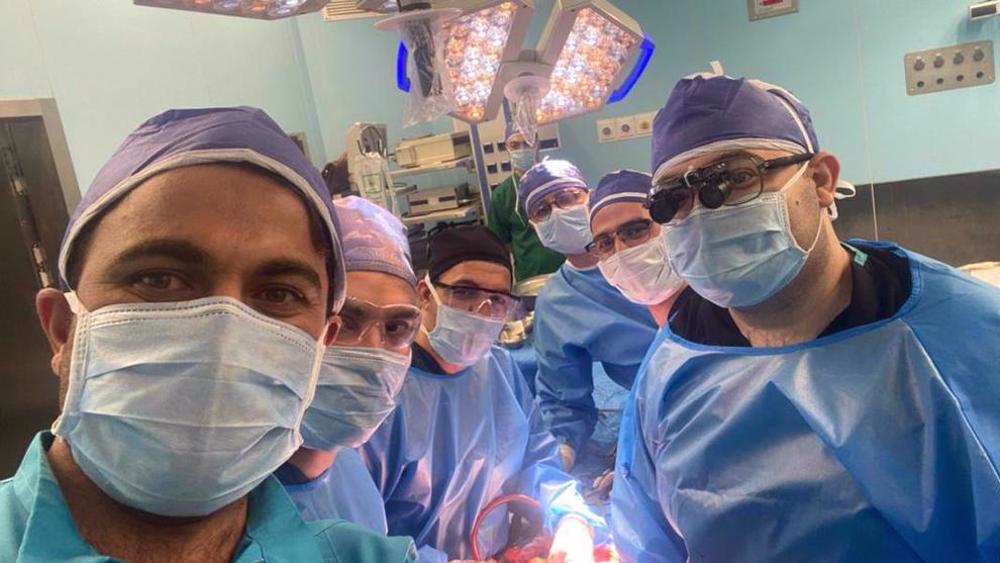Iranian doctors carry out first organ transplantation surgery from dead donor
In a groundbreaking development, Iranian doctors have successfully transplanted the organs of a patient who died from cardiac arrest caused by fatal pulmonary embolism to three recipients for the first time in the world.
Doctors at the Organ Procurement Unit of Iran University of Medical Sciences (IUMS) have successfully transplanted the organs of the dead donor to three recipients in Tehran’s Firouzgar Hospital.
Racing against time, a team of over 20 healthcare professionals managed to perform the procedure.
Dr. Yahya Zarghami, an abdominal organ transplant surgeon, explained that the main challenges were time and the health of the organs.
“In this kind of surgery, we should take much more consideration to the health of the organ,” he said.
The Donation after Brainstem Death (DBD) is quite common but the same procedure after a cardiac death, which is called DCD, is complicated and challenging and in some cases simply out of the question.
Dr. Sam Zeraatian-Nejad Davani, head of the IUMS Organ Procurement Unit, explained how this new technique can affect the number of donors.
Zeraatian-Nejad and his team specialize in DCD operations but this time they made an impossible possible when they carried out the operation.
He said the team started to work on this project some four years ago.
“After the donation of 14 patients, in the final patient, we were successful to proceed with impossible and to do that impossible thing and donate organs of a patient with pulmonary embolism and cardiac arrest” for more than 60 minutes, Zeraatian-Nejad added.
Thanks to his novel techniques performed for the first time in the world, all the recipients were healthy and those who received kidney transplants were able to leave the hospital in just three days.
Zeraatian-Nejad expressed confidence that the technique can decrease the transplantation waiting list by about 22 percent.
The multidisciplinary group of healthcare professionals, who are working with him, have pointed to the immense challenges of this procedure requiring teamwork at its best.
“The main challenge in this new DCD technique is racing against time. From the moment of the cardiac arrest, when the individual is declared dead, the first team which includes about 20 healthcare professionals has only 40 minutes to get here and continue the CPR,” said Dr. Yazdan Shafikhani, the Head of the IUMS Organ Coordination Office.
“And then the second team, which includes surgeons, has to get here taking the donor to the operating room while performing CPR and maintaining this state for about 6 hours.”
“But, I would say the most challenging part is obtaining family consent. In brain-dead cases, we have at least a couple of days. In this case, less than an hour!” he added.
In Iran, there are over 25,000 men, women and children on the national organ transplantation waiting list who desperately hoping to receive a call from the organ procurement unit.
Every two hours, one person on the organ transplantation waiting list dies which makes 10 to 12 persons per day.
However, the new technique increases the number of donors by 20-30 percent, offering a glimmer of hope to all of those who are waiting for transplantation.
Iran warns against US-Israeli plot to weaken Muslims, dominate region
VIDEO | Public uproar in US against Israeli regime
‘Ghost town’: 70% of Jabalia buildings destroyed by Israel
Mother’s Day: Sareh Javanmardi’s inspiring journey as Paralympic champion and mother
Russia downs over 40 Ukrainian drones as Putin vows 'destruction' on Kiev
VIDEO | Yemen: A bone in Israeli neck
D-8’s role in Iran’s economy after Cairo summit
China slams US as ‘war-addicted’ threat to global security










 This makes it easy to access the Press TV website
This makes it easy to access the Press TV website